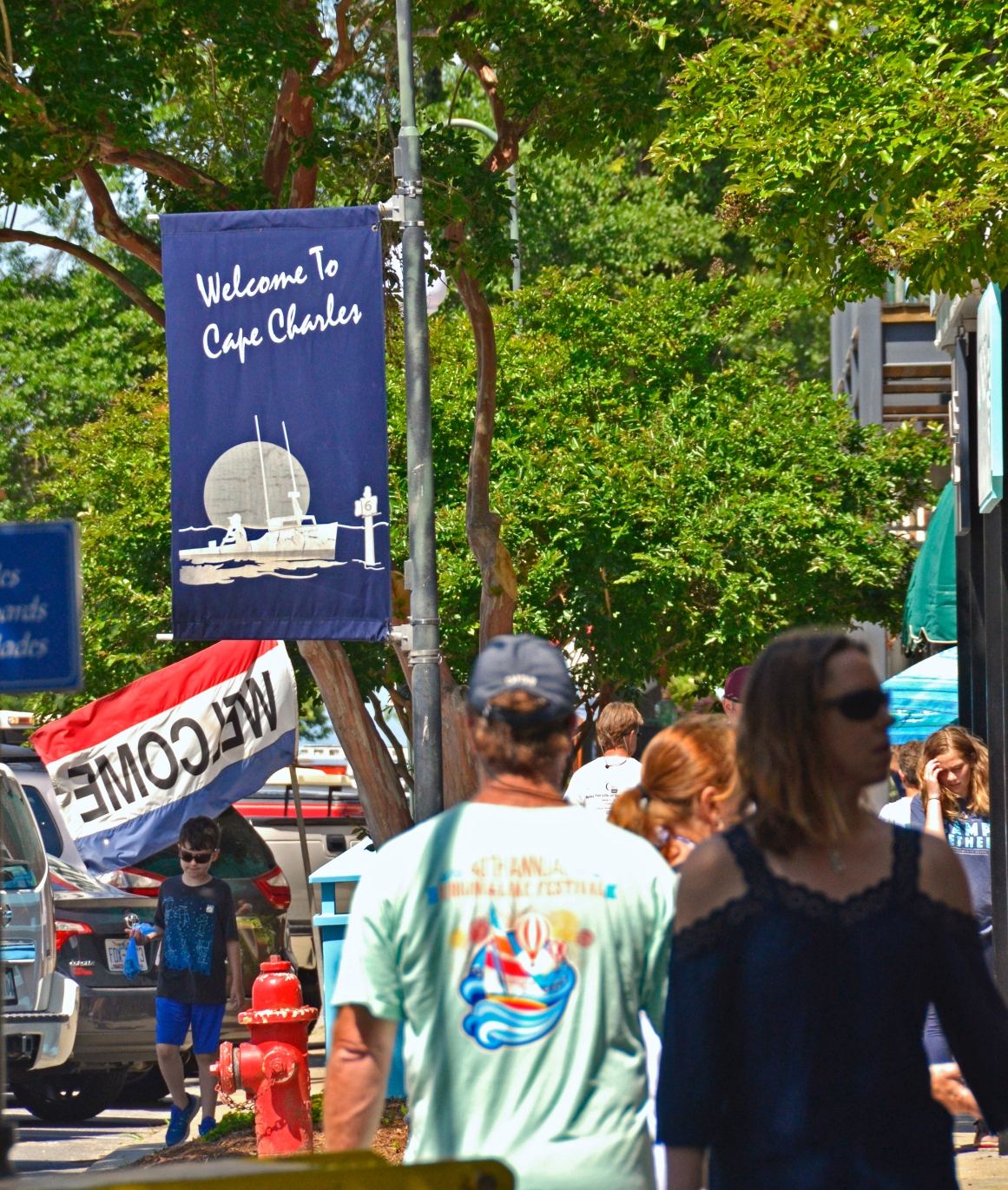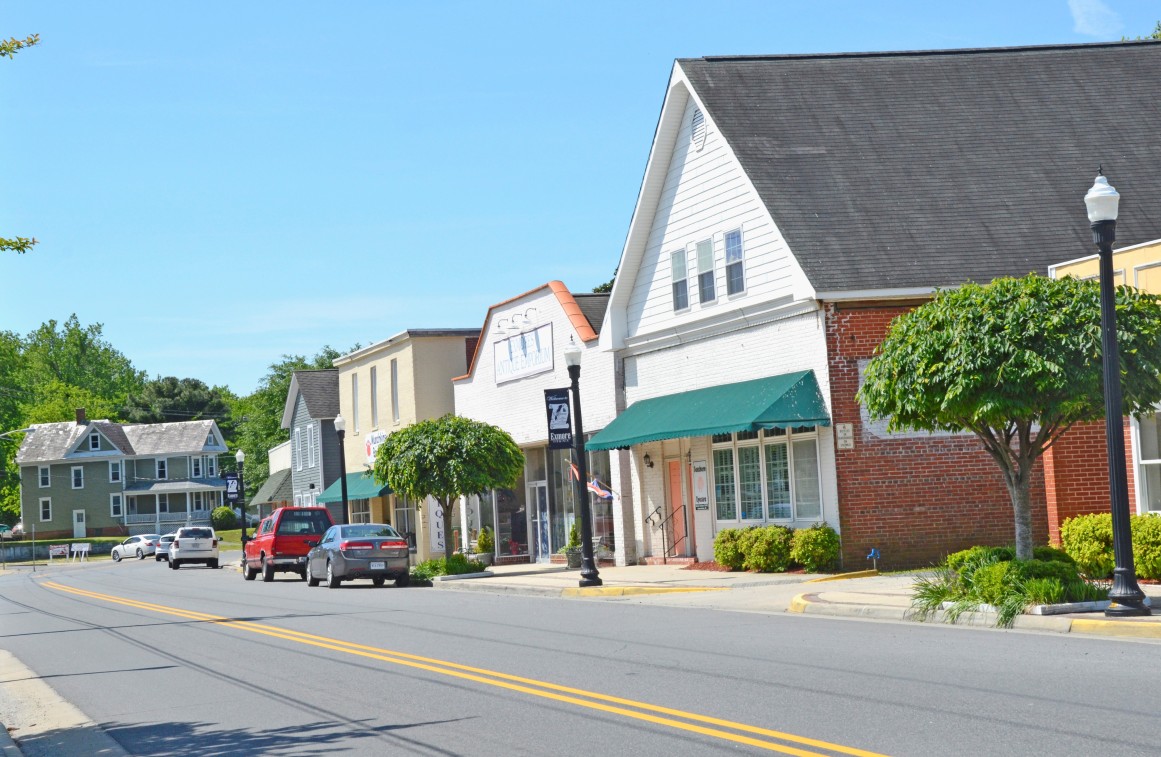About the Blogger
I’m Ryan Webb, a sociolinguist and young entrepreneur from Machipongo. I earned a Master’s degree in applied linguistics, the scientific study of language, from Old Dominion University in 2017, and since then I have begun to research and preserve the language, culture and history of Virginia’s Eastern Shore. I also founded my own company, Magine Nation, LLC, which distributes apparel, gifts and souvenirs that proudly display the Eastern Shore, its people, their culture and authentic rural coastal dialect.

Many place names on the Eastern Shore are Algonquin words that were borrowed by the English-speaking colonials. Algonquin was the language of Powhatan and the native tribes that resided on the Eastern Shore. Some town names are possible reimaginings of places in England and others are named after men of British descent. Change is an inherent feature of all spoken language, and while some place names have stood the test of time, others have evolved, likely as responses to alterations in pronunciation that occurred over time.
Accomack: The early settlers referred to the entire Eastern Shore as “Ye antient kingdome of Accawmacke.” Accawmacke was their interpretation of an Algonquin word meaning place across the water. When it became one of the original eight shires, or counties, of the Virginia colony in 1634, Accomac was spelled without the final k. The present-day spelling of Accomack was established in 1940.
Cape Charles: To the colonials, Cape Charles referred to the southern tip of the Eastern Shore and was named for the second son of King James I. The bayside town that we know today was established as the eastern terminus of the Willoughby Spit-Cape Charles ferry in the late 1800s.

Cheriton: In the 1800s, Dr. William S. Stockley named his farm near Cherrystone Creek Cheriton. There are a few different Cheritons in England that might have inspired the name of this small bayside town on the lower Eastern Shore, including a Cheriton in Devonshire.
Chincoteague: The name “Chincoteague” comes from an Algonquin word that means large inlet. The island is named after the Gingoteague tribe that lived on the northern mainland of the Eastern Shore. As late as 1872, the post office on the island was called Gingotig.
Exmore: We can’t say for sure how Exmore got its name. One theory explains that Exmore was the eleventh train station south of the Delaware state line, so in Roman numerals, there were “X” (ten) more stops before reaching the station at Delmar, Delaware. Another theory claims the name is an Americanized spelling of Exmoor in Devon County, England.

Machipongo: The Matchipungoes were one of the larger native tribes on the Eastern Shore and established several villages here. One village was near Wachapreague and another was near Brownsville in Northampton. The word now spelled as Machipongo means fine dust and flies and was the Algonquin name for Hog Island.
Nassawadox: The town of Nassawadox was named after the first church organized on the Eastern Shore in 1623, Nuswattocks Parish, which later became Hungars Parish. The Nuswattocks were a small Native American tribe that lived near present-day Nassawadox Creek.
Northampton: At one time all of the Eastern Shore was known as Accomac County, but in 1642 the whole peninsula became Northampton County, named after an esteemed early member of the Virginia Company, the Earl of Northampton. The original Northampton County is located in the East Midlands of England. In 1663, Virginia’s Northampton County was split into the two counties that exist today: the upper two-thirds of the Eastern Shore became Accomac, while the lower third remained Northampton.
Onancock: This bayside town in Accomack County is named for an Algonquin word that means foggy place. It was originally occupied by Native Americans until 1670.

Pungoteague: The name Pungoteague comes from an Algonquin word meaning sand fly river. Accomack County court sessions were held in the town’s two taverns from 1663-1708. It is also believed to be the site of the first English play in America, Ye Bare and Ye Cubb.
Saxis: In 1668, Saxis was originally called Sikes’ Island. It was so named after Robert Sikes, the first person to own the island entirely. There were many different spellings of the island (i.e. Sykes’, Sacks, Saikes, Syxes, and Saksis to name a few) before the present-day Saxis was chosen in 1896 by a local postmaster.
Tangier: When John Smith first encountered the present-day islands of Tangier and Watts in 1608, he named them “Russell’s Iles” after Walter Russell, a doctor in his small company of 15 that had set out to explore the Chesapeake Bay. While the origin of the name “Tangier” is not definitively known, the records of the 1700s and 1800s refer to the islands near Tangier Sound (these are Watts Island, Smith Island, Fox Island and Tangier itself) as “the Tangier Islands” or “the Tangiers.”
Wachapreague: This Seaside town in Accomack is named for one of the Machipongo villages that was located at or near present-day Wachapreague. The name roughly translates as little city by the sea. It was briefly called Powellton after the Powell brothers who established a shipping business there that transported farm produce as far north as New York.
You May Also Like: Walk in the Footsteps of Colonial Americans on Virginia’s Eastern Shore
The Ghost ships of Virginia’s Eastern Shore
Nine Charming Small Museums on VA’s Eastern Shore
Sources
Mariner, Kirk. (2011). Almost an Island: The History of Saxis, Virginia. Onancock, Virginia: Miona Publications.
Mariner, Kirk. (1999). God’s Island: The History of Tangier. Onancock, Virginia: Miona Publications.
Mariner, Kirk. (1996). Once Upon an Island: The History of Chincoteague. New Church, Virginia: Miona Publications.
Hagemann, James. (1986). The Heritage of Virginia: The Story of Place Names in the Old Dominion. Norfolk, Virginia: The Donning Co.
Turman, Nora M. (1964). The Eastern Shore of Virginia: 1603-1964. Onancock, Virginia: The Eastern Shore News, Inc.
Walczyk, Gail. (2004). Indians of the Lower Eastern Shore. Retrieved online from http://www.esva.net/ghotes/history/ghotes1.htm
Wise, Jennings C. (1911). Ye Kingdome of Accawmacke, or the Eastern Shore of Virginia in the Seventeenth Century. Bowie, Maryland: Heritage Books, Inc.
Author Unknown. (2018). Wachapreague History. Retrieved online from http://wachapreague.org/history/



Comments are closed.